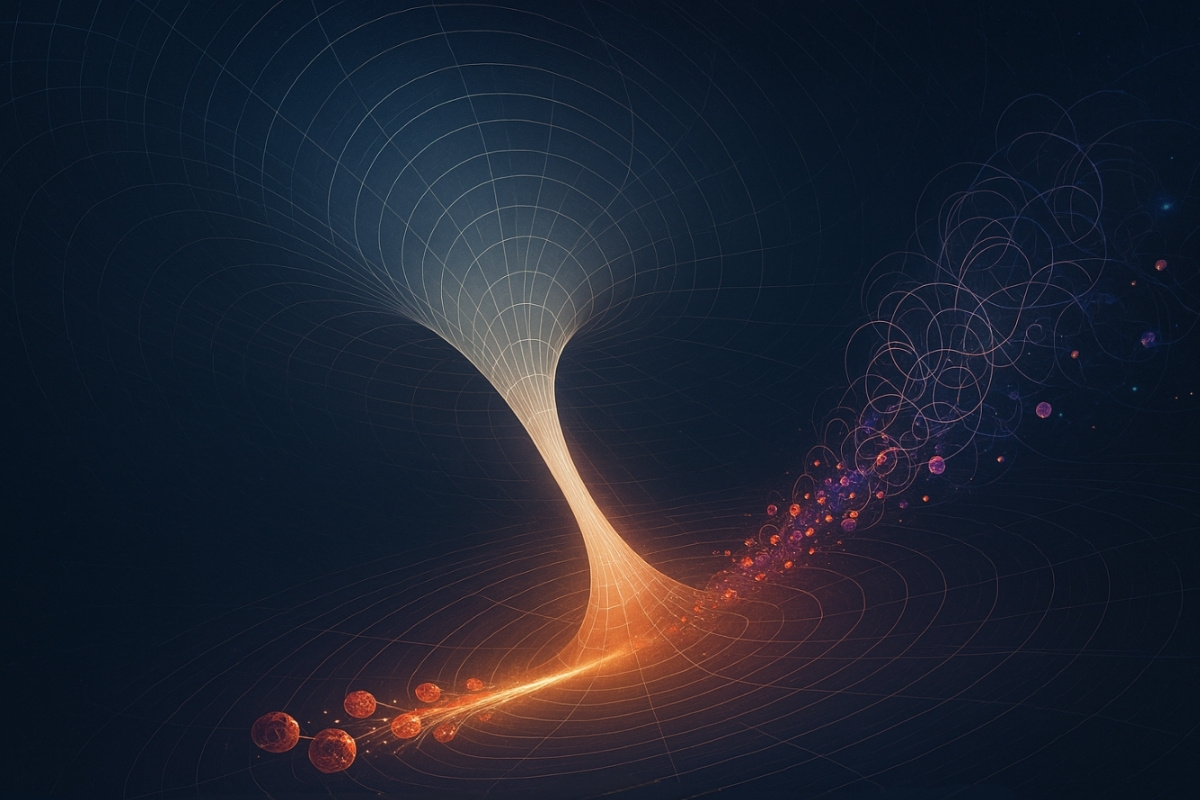
Hadronization is a process in particle physics where quarks and gluons transform into hadrons, such as protons and neutrons. But why is hadronization important? Hadronization helps us understand the strong force, one of the four fundamental forces of nature, which binds quarks together. This process is crucial for interpreting results from particle accelerators like the Large Hadron Collider. Without understanding hadronization, scientists would struggle to make sense of the data from high-energy collisions. This transformation also plays a key role in the formation of the universe, influencing the behavior of matter in extreme conditions. Dive into these 26 facts to grasp the fascinating world of hadronization and its impact on modern physics.
What is Hadronization?
Hadronization is a fascinating process in particle physics where quarks and gluons transform into hadrons. This phenomenon occurs after high-energy collisions, such as those in particle accelerators. Let's dive into some intriguing facts about hadronization.
-
Hadronization occurs in a fraction of a second. This rapid process happens almost instantaneously after a high-energy collision.
-
Quarks and gluons are the building blocks. Quarks combine with gluons, the force carriers, to form hadrons.
-
Hadrons are either baryons or mesons. Baryons, like protons and neutrons, contain three quarks, while mesons contain a quark and an antiquark.
-
The process is non-perturbative. Unlike other quantum chromodynamics (QCD) processes, hadronization cannot be described using perturbation theory.
-
Color confinement plays a role. Quarks and gluons are never found in isolation due to color confinement, leading to hadron formation.
The Role of Particle Accelerators
Particle accelerators, like the Large Hadron Collider (LHC), are essential for studying hadronization. They provide the high-energy environments needed for these transformations.
-
LHC is the world's largest particle accelerator. Located at CERN, it spans 27 kilometers and smashes protons together at near-light speeds.
-
Detectors capture hadronization events. Sophisticated detectors like ATLAS and CMS observe the particles produced during collisions.
-
Data analysis is crucial. Scientists analyze vast amounts of data to understand hadronization patterns.
-
Simulations aid research. Computer simulations help predict and interpret hadronization outcomes.
-
Discoveries lead to new physics. Studying hadronization can reveal new particles and forces.
Quantum Chromodynamics (QCD) and Hadronization
QCD is the theory describing the strong interaction, which governs hadronization. Understanding QCD is key to grasping this process.
-
QCD is a fundamental theory. It explains how quarks and gluons interact via the strong force.
-
Asymptotic freedom is a feature. Quarks behave almost freely at high energies but are tightly bound at low energies.
-
The strong force is incredibly powerful. It's the strongest of the four fundamental forces, binding quarks together.
-
QCD predicts hadronization. The theory provides a framework for understanding how quarks form hadrons.
-
Lattice QCD aids calculations. This computational method helps solve complex QCD equations.
Applications and Implications
Hadronization has implications beyond particle physics, influencing various fields and technologies.
-
Medical imaging benefits. Techniques developed for particle detectors improve medical imaging technologies.
-
Material science advancements. Understanding particle interactions aids the development of new materials.
-
Space exploration insights. Studying cosmic rays, which undergo hadronization, helps understand space environments.
-
Nuclear physics connections. Hadronization principles apply to nuclear reactions and fusion research.
-
Educational impact. Research inspires new generations of scientists and engineers.
Challenges and Future Directions
Despite significant progress, many challenges remain in fully understanding hadronization. Future research aims to address these gaps.
-
Complexity of QCD. The non-perturbative nature of QCD makes calculations difficult.
-
Experimental limitations. High-energy experiments are costly and complex to conduct.
-
Need for better models. Improved theoretical models are required to predict hadronization more accurately.
-
Interdisciplinary collaboration. Combining expertise from various fields can accelerate progress.
-
Potential for new discoveries. Uncovering unknown particles or forces could revolutionize our understanding of the universe.
-
Continued innovation. Advancements in technology and computation will drive future breakthroughs in hadronization research.
Final Thoughts on Hadronization
Hadronization is a fascinating process that transforms quarks and gluons into hadrons, the particles that make up protons and neutrons. This phenomenon plays a crucial role in particle physics, helping scientists understand the fundamental building blocks of matter. By studying hadronization, researchers gain insights into the strong force, one of the four fundamental forces of nature. This knowledge not only advances our understanding of the universe but also has practical applications in fields like medical imaging and materials science. As technology and research methods improve, our grasp of hadronization will continue to deepen, potentially leading to new discoveries and innovations. So, whether you're a budding physicist or just curious about the universe, hadronization offers a window into the intricate dance of particles that make up everything around us.
Was this page helpful?
Our commitment to delivering trustworthy and engaging content is at the heart of what we do. Each fact on our site is contributed by real users like you, bringing a wealth of diverse insights and information. To ensure the highest standards of accuracy and reliability, our dedicated editors meticulously review each submission. This process guarantees that the facts we share are not only fascinating but also credible. Trust in our commitment to quality and authenticity as you explore and learn with us.
